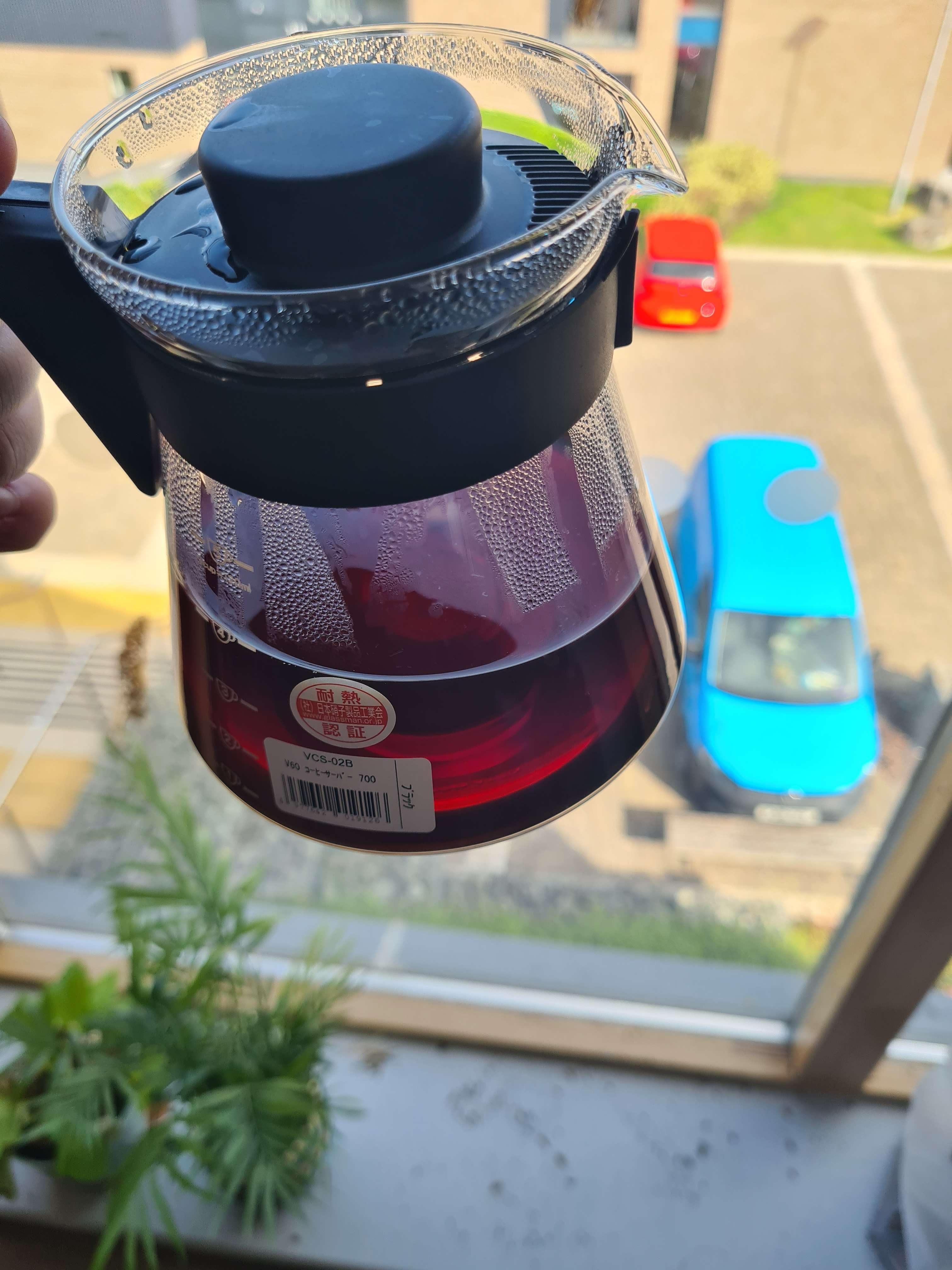A Computer Science graduate with an interest in coffee, how original.
I have owned a V60 cone for around a year now, getting it on offer with the first purchase I made from Pact. I highly recommend Pact for anyone who is looking to get their coffee shipped to them, all their coffee is fresh and roasted within 1-2 days of delivery. Slightly on the pricier end of online coffee retailers, Pact make up for it by only stocking highly traceable and ethical coffee.
My V60 Technique
I follow a rough approximation of James Hoffman’s ‘Ultimate V60 Technique’ which you can watch here. Until I get a job which provides me with more funds, some elements of James Hoffman’s technique have been replaced with the next available tool or method. My technique as it stands currently;
- Grind fine 15 grams of coffee - I use a Hario Skerton to grind my whole coffee beans. I generally grind finer than recommended for pour-over. This works well with the Skerton as it can generally have a slightly inconsistent grind size when grinding on less fine settings. I typically use 15g of coffee for every 300ml of water. My technique differs from James' here because I currently don’t own a scales or dosing scales, for a while I was borrowing a scales from my flatmate, but they have returned home, with their scales in tow. For the time being I use a measuring scoop that came with the V60 cone. This provides a decent approximation of coffee to water for the time being. Typically you would also use the scales to measure the water added each pour.
- Boil kettle - I will generally eyeball the amount of water to initially boil, but I will always initially boil more than I think I’m going to need. In the future this step of my technique will be supplemented by running the water through a filter before boiling.
- Pre-heat equipment whilst kettle boils - To maintain a consistent brewing temperature in the V60 cone it’s important to bring the starting temperature of cone up by running it under hot water. During this step I also rinse through the filter to remove any possible taste of paper (I have never been able to taste the paper even without a rinse). The implement I use to pour the water into the V60 also gets pre-heated also. Currently I use a metal jug typically used for steaming milk, I find it maintains a good stream when pouring, and despite probably not having the same element of control as the gooseneck kettle shown in James' technique I feel it works well as it is. Trying to pour directly from the kettle provides very poor control and makes it harder to pour consistently.
- Follow the timings in James' video - From this point the method is relatively identical to James', creating the divot in the grounds, blooming for 45 seconds, before then pulsing. If I am making 600ml of coffee I will keep pulsing following the same timings mentioned in the video until I run out of water. I typically make 600ml of coffee whenever I brew, as I have recently acquired a carafe that attaches to the V60, making it incredibly easy to brew multiple cups of coffee. The best part about this is that you don’t necessarily have to drink the equivalent of two cups of coffee immediately, as often the flavour of the coffee will evolve as the drink cools down. This always makes for an interestingly pleasant drinking experience especially when trying new beans.

Coffees I have enjoyed recently;
- Cafiena Blend (Pact),
- Tepangual (Pact),
- Old Brown Java,
- Thailand Pang Khon.